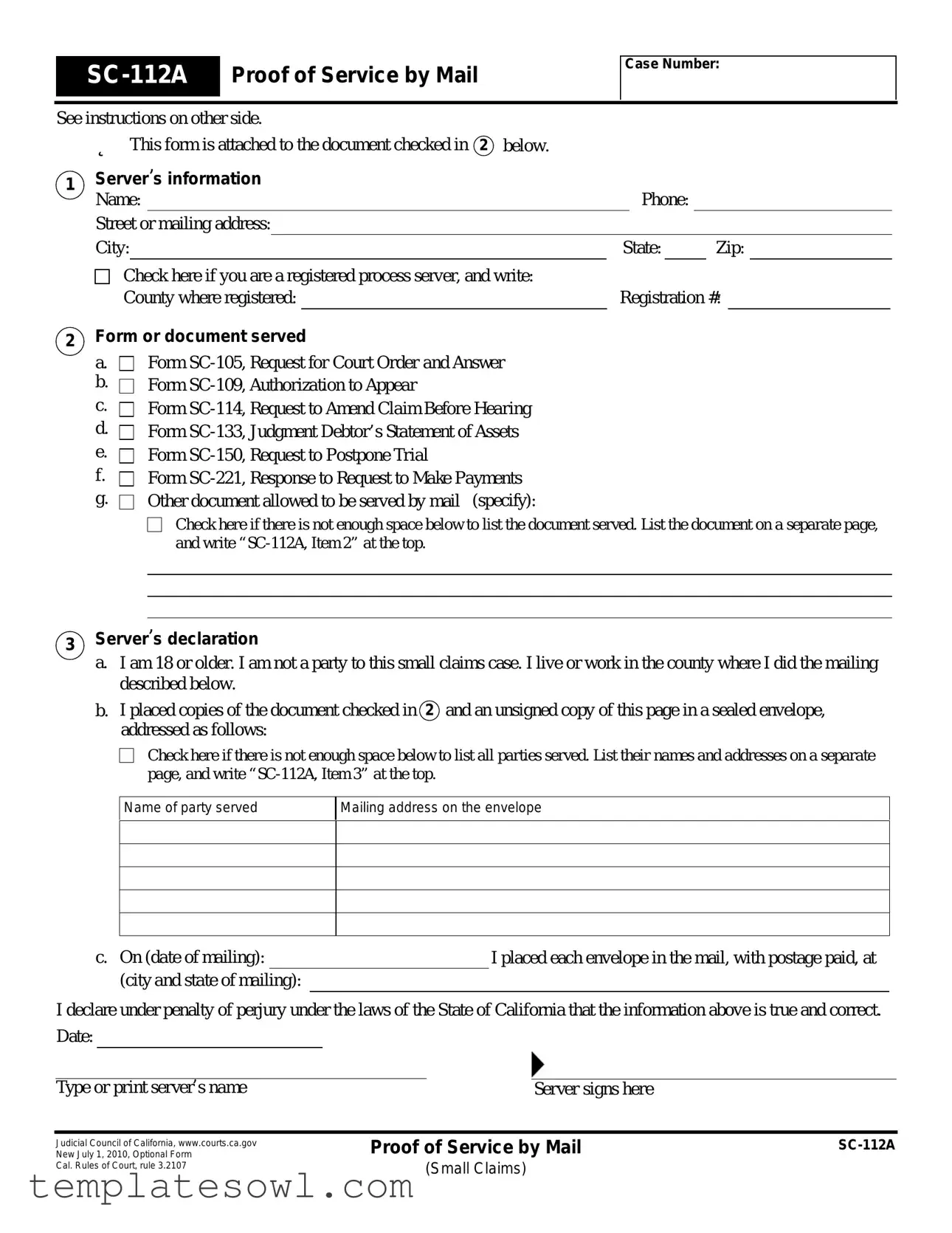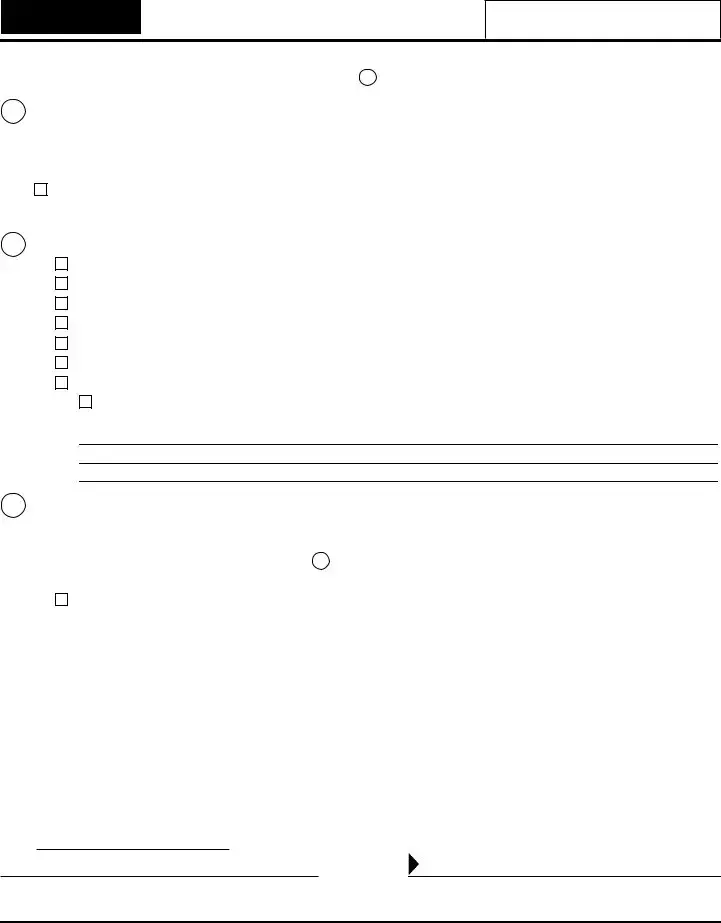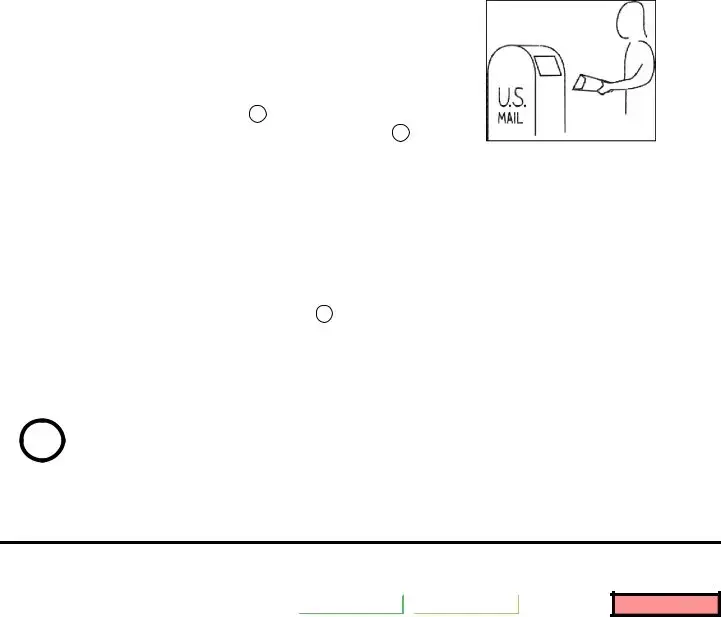Instructions for Form SC-112A, Proof of Service by Mail
(This page is not part of the Proof of Service and does not need to be copied, served, or filed.)
Form SC-112A can be used to show the court that these documents were served by mail:
•Form SC-105, Request for Court Order and Answer
•Form SC-109, Authorization to Appear
•Form SC-114, Request to Amend Claim Before Hearing
•Form SC-133, Judgment Debtor’s Statement of Assets
•Form SC-150, Request to Postpone Trial
•Form SC-221, Response to Request to Make Payments
•Other documents that are allowed to be served by mail
Form SC-112A cannot be used to prove service of these forms:
•Form SC-100, Plaintiff’s Claim and ORDER to Go to Small Claims Court
•Form SC-120, Defendant’s Claim and ORDER to Go to Small Claims Court
For information about serving these forms, see Form SC-104, Proof of Service, and Form SC-104B, What Is “Proof of Service”?
The server (the person who will do the mailing):
•Must not be a party (plaintiff or defendant) in the case
•May be a friend, relative, co-worker, or other helpful person
•Must be 18 or older
•Must live or work in the county where the mailing takes place
Follow these steps to use Form SC-112A:
1. Prepare Form SC-112A by filling in:
• The case number
• The document to be served, in item 2 *
•The names and addresses of the parties to be served, in item 3 *Prepare a separate Form SC-112A for each document to be served.
2.Give the server:
•The partially completed Form SC-112A
•One copy of the document to be served for each party to be served
3.Ask the server to:
•Fill out the remainder of the Form SC-112A.
•Mail each party to be served:
-An unsigned copy of the completed Form SC-112A and
-The document to be served (checked in Item 2 ).
•Sign a separate Form SC-112A for each document served, and give it to back you.
4.File these papers with the small claims court clerk:
•The original of each document served, with
•The signed, original Proof of Service by Mail attached
?Need help?
For free help, contact your county’s Small Claims Advisor:
Or go to “County-Specific Court Information” at www.courtinfo.ca.gov/selfhelp/smallclaims.


